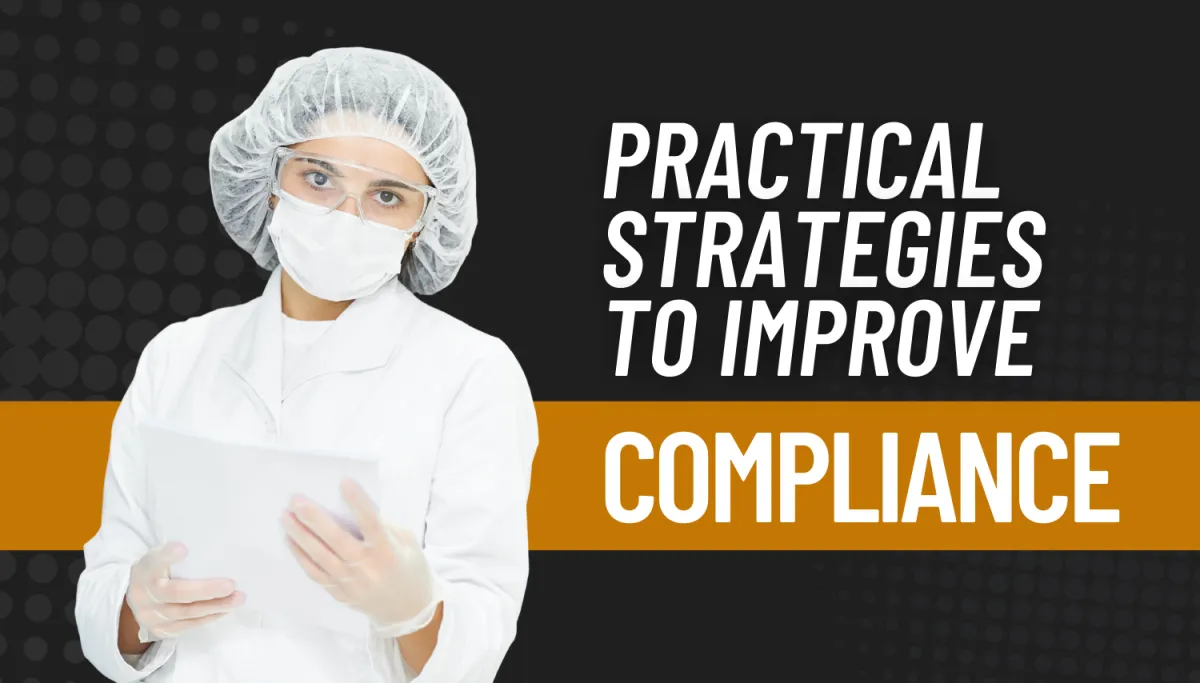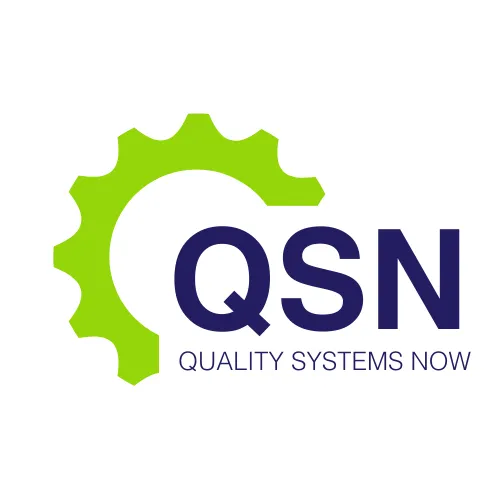NEWS

Practical Strategies to Improve Compliance
At Quality Systems Now, we specialise in supporting companies across the therapeutic goods sector in developing and implementing robust, compliant systems. This article outlines practical, scientifically grounded strategies to improve compliance and reduce regulatory risk across the product lifecycle.
Establishing a Risk-Based Quality Management System
A foundational strategy to improve compliance is the implementation of a risk-based Quality Management System (QMS) that aligns with international standards such as PIC/S Guide to GMP and ICH Q9 on Quality Risk Management. A compliant QMS should be more than a collection of documents; it must represent a structured, dynamic framework that facilitates the control of processes, products, and systems.
Risk management should be integrated into decision-making at all levels. For example, risk assessments should be performed during product development, process validation, supplier qualification, and change management. Formal tools such as Failure Mode and Effects Analysis (FMEA) and Hazard Analysis and Critical Control Points (HACCP) can support objective evaluation of potential risks and the implementation of effective controls. By focusing resources on high-risk areas, organisations can optimise compliance while managing operational efficiency.
Enhancing Cross-Functional Communication
One of the most common root causes of compliance gaps identified during regulatory inspections is poor communication between departments. Quality Systems Now has observed that in many organisations, Quality Assurance (QA), Regulatory Affairs (RA), Operations, and R&D operate in silos. This isolation leads to misaligned priorities, inconsistent documentation, and delays in implementation of critical activities.
To improve compliance, it is essential to establish structured cross-functional communication. This may include regular interdepartmental meetings, integrated project teams, and shared compliance dashboards. A robust communication framework ensures that regulatory expectations, validation requirements, and quality risk considerations are understood and addressed early in the product lifecycle. It also facilitates prompt action on deviations, change controls, and corrective actions.
Training and Competency Management
Compliance cannot be achieved without a knowledgeable and skilled workforce. Training programs must go beyond procedural instruction and foster a deep understanding of GMP principles and regulatory expectations. Quality Systems Now recommends implementing a competency-based training model where roles are mapped to specific knowledge and skill requirements, and performance is assessed regularly.
In addition, training must be dynamic and responsive to changes in regulations, procedures, and quality incidents. For example, following a deviation or inspection observation, targeted retraining should be implemented to address knowledge gaps and reinforce correct behaviours. A well-maintained training matrix, real-time tracking of completion, and regular effectiveness evaluations are critical components of a compliant training system.
Document Control and Data Integrity
Accurate, consistent, and retrievable documentation is a cornerstone of GMP compliance. Organisations must implement an electronic or paper-based document control system that ensures only current versions of procedures, forms, and records are in use. Furthermore, data integrity must be maintained throughout the data lifecycle—from generation and recording to storage and retrieval.
Regulators such as the TGA and FDA have published extensive guidance on data integrity, including ALCOA+ principles (Attributable, Legible, Contemporaneous, Original, Accurate, Complete, Consistent, Enduring, and Available). Quality Systems Now supports clients in establishing documentation systems that enforce these principles through technical controls, procedural safeguards, and audit trails. Particular attention must be paid to laboratory data, manufacturing batch records, and electronic quality systems, where breaches of data integrity are frequently observed.
Effective Change Control and Deviation Management
A mature compliance system must be capable of managing change effectively. All changes—whether to equipment, materials, methods, or suppliers—must be assessed for potential impact on product quality and regulatory compliance. A structured change control system requires input from QA, RA, Operations, and R&D, and must include documented risk assessment, approval, implementation, and follow-up.
Similarly, deviations from approved procedures must be investigated thoroughly to determine root cause, assess product impact, and implement effective corrective and preventive actions (CAPA). Failure to properly investigate and close deviations is a common observation during regulatory inspections and signals a lack of compliance maturity. An effective CAPA system requires not only procedural discipline but also a culture of accountability and continuous improvement.
Internal Auditing and Management Review
Internal audits are a powerful tool for identifying compliance risks before they become regulatory issues. Audits must be scheduled, objective, and conducted by qualified personnel. The scope should cover all GxP-relevant processes, and findings must be categorised, tracked, and followed through to resolution. At Quality Systems Now, we advise clients to adopt a risk-based audit schedule and to use audit trends as inputs into their risk management and training systems.
Management Review provides the executive function with visibility into the performance of the QMS. It ensures that quality objectives are aligned with business goals and that resources are allocated effectively. Reviews must be based on data and include metrics such as deviation trends, CAPA closure rates, audit findings, and customer complaints. A documented review process that leads to tangible improvement actions is essential for demonstrating management commitment to compliance.
Supplier Qualification and Oversight
Compliance extends beyond internal operations to include suppliers and contract service providers. Regulatory authorities expect manufacturers to exercise control over their supply chain through a structured qualification process and ongoing performance monitoring. This includes auditing suppliers, reviewing quality agreements, and evaluating supplier risk.
An effective supplier management program categorises suppliers based on the criticality of the goods or services they provide and applies controls accordingly. For example, an API manufacturer requires a different level of scrutiny than a secondary packaging supplier. Quality Systems Now assists organisations in developing supplier qualification programs that are proportionate, risk-based, and aligned with regulatory expectations.
Proactive Inspection Readiness
Preparation for regulatory inspections should not be reactive or last-minute. Compliance must be maintained continuously, and inspection readiness should be built into the organisational culture. Regular mock audits, inspection drills, and readiness checklists are valuable tools to ensure that staff are prepared, documentation is complete, and facilities are inspection-ready at all times.
Quality Systems Now supports clients in developing inspection readiness strategies that include assigning inspection coordinators, training spokespersons, preparing document response protocols, and maintaining inspection rooms. Organisations that embed these practices into routine operations are better positioned to succeed during actual inspections.
Leveraging Technology for Compliance
Digital tools can significantly enhance compliance when implemented thoughtfully. Electronic QMS platforms, Learning Management Systems (LMS), electronic batch record systems, and digital audit management tools all offer opportunities to streamline compliance activities and improve traceability.
However, the adoption of technology must be accompanied by appropriate validation and data integrity controls. Systems must be validated according to GAMP 5 guidelines, and user access must be controlled and documented. Quality Systems Now works with clients to select and validate compliant digital solutions that support real-time data analysis, streamlined workflows, and secure data handling.
Conclusion
Compliance is not an event—it is a continuous, evolving process that requires active engagement from all functions within an organisation. By implementing practical strategies such as risk-based QMS design, cross-functional collaboration, robust training, and effective change management, companies can significantly improve their compliance posture and reduce regulatory risk.
At Quality Systems Now, we bring scientific rigour and industry insight to help therapeutic goods manufacturers, laboratories, and biotech firms embed compliance into their operational DNA. Through structured systems, evidence-based strategies, and a commitment to quality culture, sustained compliance is achievable—and essential for long-term success in regulated environments.
